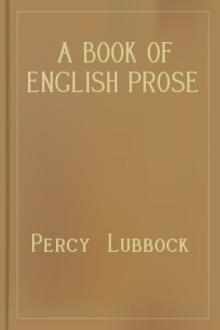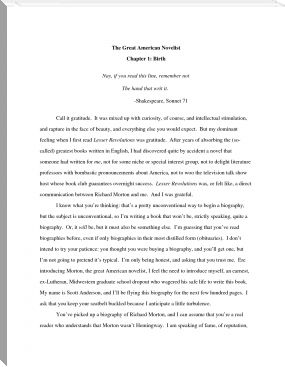indebted for the following particulars relative to his father, and his descendants down to the present time. "Robert Paterson, alias Old Mortality, was the son of Walter Paterson and Margaret Scott, who occupied the farm of Ilaggisha, in the parish of Hawick, during nearly the first half of the eighteenth century. Here Robert was born, in the memorable year 1715. "Being the youngest son of a numerous family, he, at an early age, went to serve with an elder brother, named Francis, who rented, from Sir John Jardine of Applegarth, a small tract in Comcockle Moor, near Lochmaben. During his residence there, he became acquainted with Elizabeth Gray, daughter of Robert Gray, gardener to Sir John Jardine, whom he afterwards married. His wife had been, for a considerable time, a cook-maid to Sir Thomas Kirkpatrick of Closeburn, who procured for her husband, from the Duke of Queensberry, an advantageous lease of the freestone quarry of Gatelowbrigg, in the parish of Morton. Here he built a house, and had as much land as kept a horse and cow. My informant cannot say, with certainty, the year in which his father took up his residence at Gatelowbrigg, but he is sure it must have been only a short time prior to the year 1746, as, during the memorable frost in 1740, he says his mother still resided in the service of Sir Thomas Kirkpatrick. When the Highlanders were returning from England on their route to Glasgow, in the year 1745-6, they plundered Mr. Paterson's house at Gatelowbrigg, and carried him a prisoner as far as Glenbuck, merely because he said to one of the straggling army, that their retreat might have been easily foreseen, as the strong arm of the Lord was evidently raised, not only against the bloody and wicked house of Stewart, but against all who attempted to support the abominable heresies of the Church of Rome. From this circumstance it appears that Old Mortality had, even at that early period of his life, imbibed the religious enthusiasm by which he afterwards became so much distinguished. "The religious sect called Hill-men, or Cameronians, was at that time much noted for austerity and devotion, in imitation of Cameron, their founder, of whose tenets Old Mortality became a most strenuous supporter. He made frequent journeys into Galloway to attend their conventicles, and occasionally carried with him gravestones from his quarry at Gatelowbrigg, to keep in remembrance the righteous whose dust had been gathered to their fathers. Old Mortality was not one of those religious devotees, who, although one eye is seemingly turned towards heaven, keep the other steadfastly fixed on some sublunary object. As his enthusiasm increased, his journeys into Galloway became more frequent; and he gradually neglected even the common prudential duty of providing for his offspring. From about the year 1758, he neglected wholly to return from Galloway to his wife and five children at Gatelowbrigg, which induced her to send her eldest son Walter, then only twelve years of age, to Galloway, in search of his father. After traversing nearly the whole of that extensive district, from the Nick of Benncorie to the Fell of Barullion, he found him at last working on the Cameronian monuments, in the old kirkyard of Kirkchrist, on the west side of the Dee, opposite the town of Kirkcudbright. The little wanderer used all the influence in his power to induce his father to return to his family; but in vain. Mrs. Paterson sent even some of her female children into Galloway in search of their father, for the same purpose of persuading him to return home; but without any success. At last, in the summer of 1768, she removed to the little upland village of Balmaclellan, in the Glenkens of Galloway, where, upon the small pittance derived from keeping a little school, she supported her numerous family in a respectable manner. "There is a small monumental stone in the farm of the Caldon, near the House of the Hill, in Wigtonshire, which is highly venerated as being the first erected, by Old Mortality, to the memory of several persons who fell at that place in defence of their religious tenets in the civil war, in the reign of Charles Second. "From the Caldon, the labours of Old Mortality, in the course of time, spread over nearly all the Lowlands of Scotland. There are few churchyards in Ayrshire, Galloway, or Dumfries-shire, where the work of his chisel is not yet to be seen. It is easily distinguished from the work of any other artist by the primitive rudeness of the emblems of death, and of the inscriptions which adorn the ill-formed blocks of his erection. This task of repairing and erecting gravestones, practised without fee or reward, was the only ostensible employment of this singular person for upwards of forty years. The door of every Cameronian's house was indeed open to him at all times when he chose to enter, and he was gladly received as an inmate of the family; but he did not invariably accept of these civilities, as may be seen by the following account of his frugal expenses, found, amongst other little papers, (some of which I have likewise in my possession,) in his pocket-book after his death.
Gatehouse of Fleet, 4th February, 1796.
ROBERT PATERBON debtor to MARGARET CHRYSTALE.
To drye Lodginge for seven weeks,....... 0 4 1
To Four Auchlet of Ait Meal,............ 0 3 4
To 6 Lippies of Potatoes................ 0 1 3
To Lent Money at the time of Mr. Reid's
Sacrament,......................... 0 6 0
To 3 Chappins of Yell with Sandy the
Keelman,*.......................... 0 0 9
Total,............................L.0 15 5
Received in part,....................... 0 10 0
Unpaid,............................... L.0 5 5
*["A well-known humourist, still alive, popularly called by the name
of Old Keelybags, who deals in the keel or chalk with which farmers
mark their flocks."]
"This statement shows the religious wanderer to have been very poor in his old age; but he was so more by choice than through necessity, as at the period here alluded to, his children were all comfortably situated, and were most anxious to keep their father at home, but no entreaty could induce him to alter his erratic way of life. He travelled from one churchyard to another, mounted on his old white pony, till the last day of his existence, and died, as you have described, at Bankhill, near Lockerby, on the 14th February, 1801, in the 86th year of his age. As soon as his body was found, intimation was sent to his sons at Balmaclellan; but from the great depth of the snow at that time, the letter communicating the particulars of his death was so long detained by the way, that the remains of the pilgrim were interred before any of his relations could arrive at Bankhill.
"The following is an exact copy of the account of his funeral expenses,—the original of which I have in my possession:—
"Memorandum of the Funral Charges of Robert Paterson,
who dyed at Bankhill on the 14th day of February, 1801.
To a Coffon................... L.0 12 0
To Munting for do............... 0 2 8
To a Shirt for him.............. 0 5 6
To a pair of Cotten Stockings... 0 2 0
To Bread at the Founral......... 0 2 6
To Chise at ditto............... 0 3 0
To 1 pint Rume.................. 0 4 6
To I pint Whiskie............... 0 4 0
To a man going to Annam......... 0 2 0
To the grave diger.............. 0 1 0
To Linnen for a sheet to him.... 0 2 8
L.2 1 10
Taken off him when dead,.........1 7 6
L.0 14 4
"The above account is authenticated by the son of the deceased.
"My friend was prevented by indisposition from even going to Bankhill to attend the funeral of his father, which I regret very much, as he is






Comments (0)